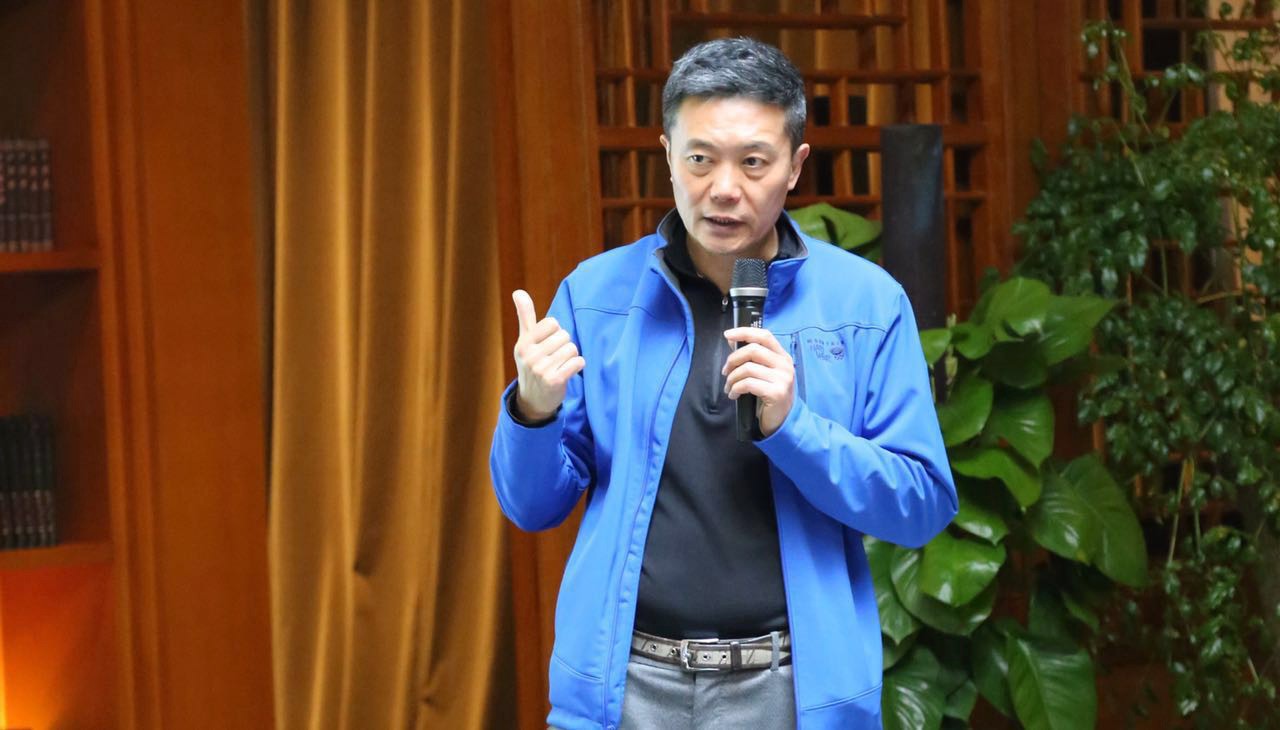The Zhongli Group is an investor in Baidu's take-out, existing life, and Hyperloop and other star companies. It was ranked 20th in the Zero2IPO Group's annual ranking of China's equity investment in 2016, and ranked 21st in the KPCB Group. .
Wang Weijia joined the company last year and was responsible for the North American investment business, and he mainly invested in artificial intelligence technology innovation companies. He has been graduating from Stanford University for 20 years and has been focusing on artificial intelligence technology. His doctoral supervisor, Bernard Widrow, created neuron ADLINE in 1959. The neuron is the smallest unit of the brain system. Its invention laid the foundation for future neural networks (an important branch of artificial intelligence).
His return to China was mainly invited to the Yabuli Forum. Before returning to Silicon Valley, he took a lecture on artificial intelligence in Beijing.

Wang Weijia
In his view, there are not many start-up companies with genuine original technology in China. They are fiercely hyped and lack genuine original technology.
"In the field of artificial intelligence, I know there are some companies that are quite crazy in their valuations. I certainly wouldn't vote for such companies." Wang Weijia specializes in investing in AI companies in Silicon Valley. He believes that the US innovation cycle is once a decade, from the last century. The beginning of the semiconductor industry in the 1970s, the US innovation cycle shifted to Silicon Valley, experienced the prosperity of the PC, the Internet, and the mobile Internet. The next decade must belong to artificial intelligence.
Wang Weijia believes that there are opportunities for hot industries that have already been changed by artificial intelligence. For example, autopilot, the entry of many applications and capital has proved that this is a broad market, especially for chip, sensor and solution technology companies.
For example, radar technology that can perform topographic scanning faster and more accurately, Internet companies such as Google, which are autopilot, and car companies that are now in a crisis sense and are developing new technologies may be interested in such technology companies. Early investors had a logical exit.
Even so, Wang Weijia still insists on finding new areas. "It's crowded now with face recognition and automatic driving. After a certain amount of congestion, we're going to invest less and less."
Medical care is a relatively less congested area with considerable development prospects. Artificial intelligence will promote the development of this industry very well. Take pharmaceuticals as an example. When you are developing drugs that can treat cancer, the structure of these drugs may have hundreds of thousands of possibilities. With artificial intelligence, you can make effective at this stage. The drug structure is analyzed again and the most suitable structure is produced for experiments.
Also optimistic about the application of artificial intelligence in the medical field is Baidu. On February 9th, Baidu shut down O2O services such as online registration and medical consultation. Several teams switched to the AI ​​system and switched from low-level services to artificial intelligence medical research and development. At the annual meeting in Yabuli, Robin Li also revealed interest in genetic testing and new drug development.
Investing in such vertical industries can enter the early stage of the artificial intelligence reform industry, and it can't help but have a market share. However, the immature application of this technology will lead to greater risks.
1 2 Next>Smart Board Classroom
Smart Board For Classroom refers to an educational setting equipped with interactive whiteboards known as Smart Boards. These classrooms are designed to enhance teaching and learning experiences through the integration of technology.
Interactive Whiteboards: Smart Boards are large Smart Board Touch Screen sensitive displays that allow teachers and students to interact directly with the screen using touch gestures or digital pens. This enables dynamic and hands-on engagement with digital content.
Digital Content and Resources: Smart Board Classrooms provide access to a wealth of digital content, including educational software, multimedia resources, and interactive lessons. Teachers can incorporate interactive multimedia elements into their lessons to make them more engaging and interactive.
Collaboration and Communication: Smart Board Display facilitate collaboration among students and teachers. They support features like multi-touch capability.smart whiteboard, allowing multiple users to work on the smart board simultaneously. This promotes teamwork, group discussions, and interactive learning activities.
Annotation and Note-taking: Smart Board Alternative enable teachers and students to annotate and write directly on the screen, similar to a traditional whiteboard. This allows for real-time explanations, highlighting important points, and taking notes during lessons.
Integration with Technology: Smart Board Touch Screen often integrate with other technologies and devices, such as computers, tablets, and audio systems. This enables seamless connectivity and interaction between different devices, enhancing the overall teaching and learning experience.
Smart Board Classrooms revolutionize traditional teaching methods by combining interactive technology with pedagogical practices. They create an immersive and interactive smart board learning environment that fosters student engagement, collaboration, and active participation, ultimately enhancing the overall educational experience.
Smart Board Size,Smart Board For Classroom,Smart Board Touch Screen,Smart Board Alternative,Smart Board Display
Jumei Video(Shenzhen)Co.,Ltd , https://www.jmsxdisplay.com